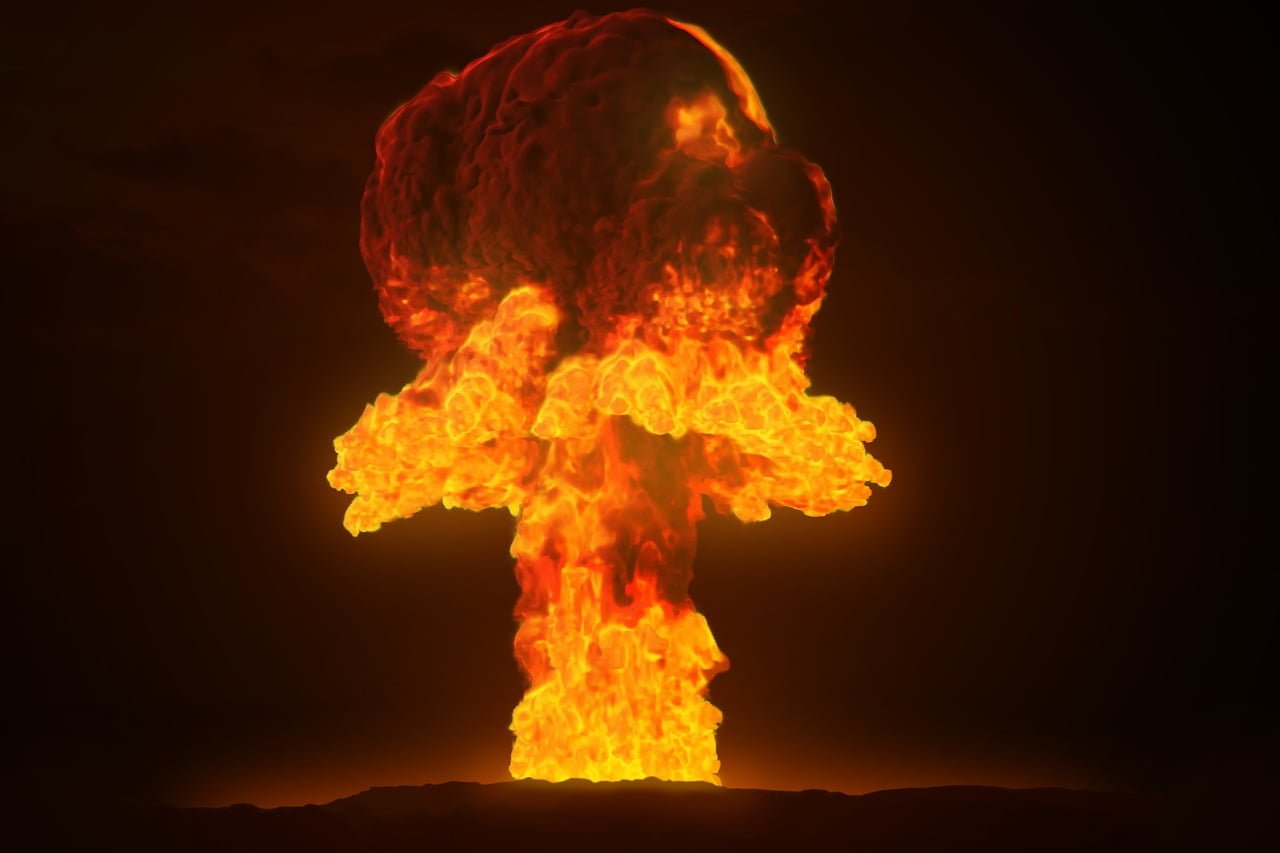The Bulletin of the Atomic Scientists announced today that they’ve moved the time on their Doomsday Clock forward by 30 seconds, putting the time at two minutes until nuclear war triggers the apocalypse. The time on the Doomsday Clock is now at its latest moment ever—matching the time in 1953. That was the height of the Cold War and the year the Soviet Union tested its hydrogen bomb the year after the U.S. tested its own hydrogen bomb.
BAS moves Doomsday Clock closer to apocalypse hour
Speakers from the Bulletin of the Atomic Scientists said there were several factors prompting their difficult decision to advance the time on their Doomsday Clock. The focus of the organization is on the risks of nuclear war, climate change and “emerging technologies,” and their primary reason for advancing the time on the clock is the risk of nuclear war. The Doomsday Clock is a metaphor for humanity’s proximity to apocalypse—destroying itself through various means. The BAS created the clock in 1947.
“Major nuclear actors are on the cusp of a new arms race, one that will be very expensive and will increase the likelihood of accidents and misperceptions,” BAS President and CEO Rachel Bronson said in a statement. “Across the globe, nuclear weapons are poised to become more rather than less usable because of nations’ investments in their nuclear arsenals.”
She noted that the BAS has been highlighting the risk of nuclear war for some time, but despite that, “momentum toward this new reality is increasing.” She explained that there has been a lack of progress in “managing the technologies that can bring humanity both relief and harm.” She hopes that her organization’s statement draws attention to the “dangerous trajectory” humanity is on.
Global implications in 2017 advancement of Doomsday Clock
The organization pushed its Doomsday Clock forward 30 seconds last year as well, saying that global leaders “failed to respond effectively to the looming threats of nuclear war and climate change, making the world security situation more dangerous.” At the time, the BAS felt that the world had become “as dangerous as it has been since World War II.
Last year’s biggest risks, according to the organization, also pertained to nuclear war. North Korea claimed significant progress in its nuclear weapons program om 2017. The BAS also drew attention to “hyperbolic rhetoric and provocative actions” by both North Korea and the U.S., which it said “increased the possibility of nuclear war by accident or miscalculation.”
Also in 2017, the U.S. remained at odds with Russia, and military exercises continued “along the borders of NATO.” Tensions also remained in the South China Sea where the U.S. has allied with regional powers there to oppose China’s militarization of the sea. Meanwhile, Pakistan and India faced off in South Asia while uncertainty about the U.S. position on the Iranian nuclear deal continued.
U.S. implicated in latest Doomsday Clock movement
In today’s statement about its Doomsday Clock, the BAS also implicated U.S. exactions as currently exacerbating the problems that began to unfold in 2017, making an already-dire situation even worse. The BAS stated that recent U.S. actions have exacerbated the “breakdown in the international order.”
“In 2017, the United States backed away from its longs-standing leadership role in the world, reducing its commitment to seek common ground and undermining the overall effort toward solving pressing global governance challenges,” the BAS’ statement reads.
Without calling out President Trump by name, the organization blasted Washington in such a way that, for anyone who’s been paying attention, it appears the organization may have had him in mind. In fact, the BAS may be lambasting Trump’s public interactions and nuclear war-related taunts with North Korean leader Kim Jong-Un.
“Neither allies nor adversaries have been able to reliably predict US actions—or understand when US pronouncements are real, and when they are mere rhetoric,” the BAS states. “International diplomacy has been reduced to name-calling, giving it a surrealistic sense of unreality that makes the world security situation ever more threatening.”
Experts call out Trump directly over Doomsday Clock
Another organization pressing for the elimination of nuclear weapons took a more direct approach to calling out Trump. Responding to the BAS’ updated concerns about nuclear war, Global Zero Executive Director Derek Johnson said in an emailed statement:
“Twelve months into the Trump administration, the outlook for the planet has gone from bad to worse… Last year, the Clock ticked forward largely in response to candidate Trump’s alarming campaign rhetoric. But the reality of a nuclear-armed President Trump running loose in the world is worse than we feared… The first year of the Trump administration saw a parade of nuclear-tinged crises steadily worsen. North Korea and the United States are on a collision course accelerated by schoolyard taunts, missile tests and threats of ‘fire and fury.'”
Beatrice Fihn, executive director of the International Campaign to Abolish Nuclear Weapons (ICAN), is calling for more nations to get on board with the nuclear ban treaty:
“The actions and policies of the nuclear-armed states are winding the Doomsday Clock towards midnight,” she said in an emailed statement. “We have been lucky to avoid conflict through intentional or accidental means, but recent posturing and the false alarms in Hawaii and Japan show our luck is about to run out if we don’t move quickly… 122 nations voted for the nuclear ban Treaty and other nations need to join the process so we can stop flirting with our own destruction and destroy the Doomsday Clock once and for all.”




